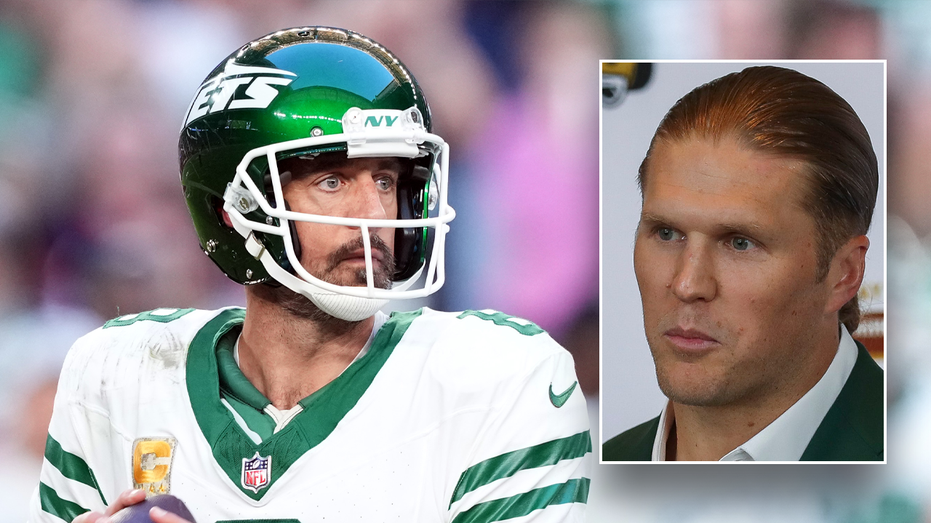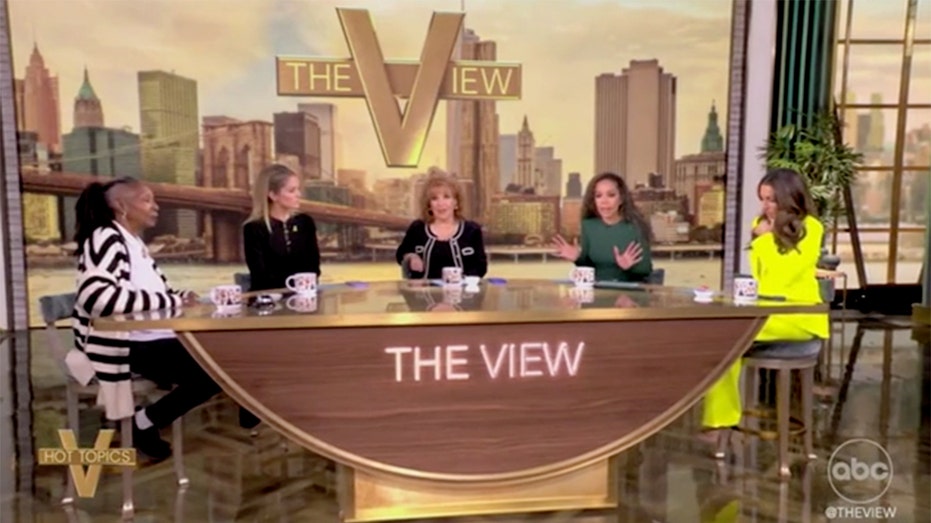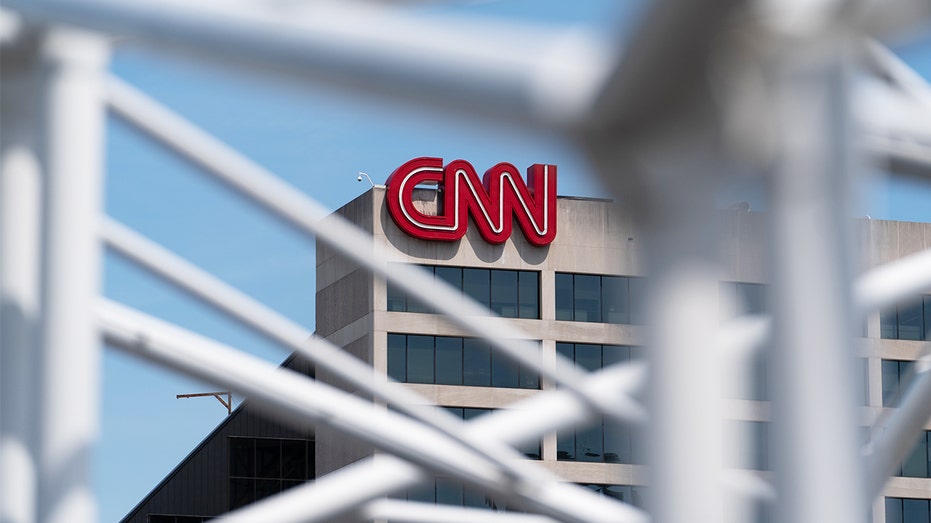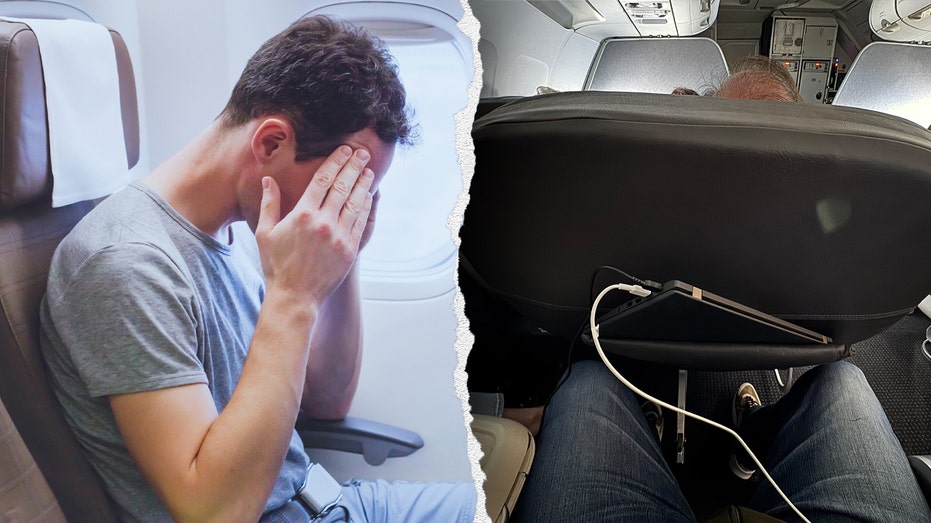- by foxnews
- 15 Nov 2024
‘Yachts at the top’: power, privacy and privilege in the world of Australian superyachts
‘Yachts at the top’: power, privacy and privilege in the world of Australian superyachts
- by theguardian
- 25 Mar 2023
- in news

Visible from the footpath at the water's edge, the superyachts berthed at Melbourne City Marina bob gently up and down, their sleek and shiny exteriors reflecting the placid waters below.
For me, and most people on this planet, this is about as close as we are likely to get to a superyacht. In Australia, that's a pleasurecraft longer than 24 metres. Internationally, the starting length is 30 metres. The City of Melbourne recently spent $1.97m upgrading Victoria Harbour, including its four superyacht berths, to fit vessels up to 67 metres long. But for the tiny portion of the world's ultra wealthy for whom superyacht size is a matter of concern, 67 metres is fairly moderate. The longest privately owned superyacht in the world is the 180-metre Azzam, reportedly built for the former president of the United Arab Emirates, the late Sheikh Khalifa bin Zayed Al Nahyan.
Superyachts are markers of power and extravagance. They are floating, transportable six-star hotels, capable of including everything from nail parlours to gyms, helipads and boardrooms, marble bathrooms and priceless art, as well as what the industry calls "toys" - from jet skis worth the equivalent of the average Australian worker's salary to private submarines worth millions.
In a recent memoir, the longtime Australian seafarer and superyacht captain Brendan O'Shannassy writes: "Until space travel becomes a commercial reality, [superyachts] are the greatest display of wealth on the planet."
For all their capacity to allow long-distance travel in extreme luxury, though, superyachts aren't frequent visitors to Australian waters. The local industry has been lobbying to change that, and state and federal governments have made superyacht-friendly moves, hitching millions of dollars in public infrastructure upgrades and tax concessions to claims that these will bring millions in economic benefits to every port in which a vessel makes anchor.
But despite public money going towards establishing and upgrading infrastructure that is only accessible to the very privileged few, there's been little public scrutiny of this elite industry.
Superyachts are not super common, although their numbers are growing. Sales company Edmiston recently estimated that the global fleet comprised a total of 5,892 vessels - representing an increase of 44% over the last decade. Most of those yachts are between 30 and 50 metres (4,957); 13% are between 50 and 80 metres (753) and 3% are over 80 metres (182).
There are only about 120 superyachts owned by Australians, concentrated mostly around Sydney Harbour and south-east Queensland. About half of them are charter vessels. It's likely all of them have, at some point, been through Captain Richard Morris's hands.
Fresh off the plane from the Dubai Boat Show, Morris tells Guardian Australia that he got his start in the merchant navy at 17, before landing a job as a deckhand two years later on the 86-metre superyacht Nabila, owned by the influential and extravagant Saudi arms dealer, fixer and liaison of presidents and tycoons Adnan Khashoggi. Nabila was Khashoggi's third yacht and the height of ostentatious luxury when it launched in 1980. Its 100 rooms included Italian hand-carved onyx bathrooms, a patisserie, a movie theatre, a hair salon, a hospital with an operating theatre, and 320 metres of Italian leather upholstery. When Khashoggi's empire began to decay in the late 80s, he sold Nabila to Donald Trump for $29m - considered a bargain - with the businessman who would later become US president renaming the yacht the Trump Princess.
Morris, meanwhile, left Nabila after a year and began building his own career as a seafarer, becoming a captain at just 27 and a master mariner. He moved ashore in 1999 and was hired by NSW Maritime to build a new superyacht marina in Rozelle Bay.
"That was the beginning of superyachting in Australia," Morris says. "Prior to that, only a few people here had superyachts, because there was the tall poppy syndrome - high net wealth Australians were reluctant to show their extreme wealth."
The Sydney Olympics in 2000 changed that, Morris says. The marina development was partly to accommodate the super wealthy who were planning to bring their yachts down for the Games. Morris managed the marina for the next decade, before moving into local superyacht sales and charters.
The Sydney experience is one that the industry is keen to replicate for the forthcoming Brisbane Olympics. The mining magnate Gina Rinehart may have been lampooned by the public in 2021 when she complained that she had nowhere to moor her yacht in Brisbane, but the Queensland Labor government appears to agree it should invest in more superyacht infrastructure. It's had a multiyear superyacht strategy since 2018, and in May last year it was updated and extended to take the Olympics into account.
Its listed achievements so far include $28m to upgrade the Cairns Marine Precinct, $2.87m for a 160-metre superyacht berth on the Gold Coast, and planning for 80-metre superyacht facilities and additional marinas in new developments on the Spit. Its stated goal is for Queensland to be "world recognised as the major superyacht hub in the Asia-Pacific region". Economic modelling for industry lobby group Superyacht Australia argues the 2032 Games presents "an unparalleled opportunity to springboard the sector on to the global stage and demonstrate the prosperity the sector can support in Australia". It hopes Australia will reach 8% of the global market - that's 533 vessels - in the next three years, which it says will yield hundreds of millions of dollars in direct economic benefits.
Until just prior to the pandemic, superyachts could not come to Australia without the owner paying a hefty tax on the vessel, with the visiting multimillion-dollar vessels treated as though they were being imported permanently into the country. That changed with the passage of the Special Recreational Vessels Act 2019. The act, which relieves the owner of having to pay import duties including GST, was hitched as a rider to various unrelated bills by the Coalition government until it was passed as a standalone just before Christmas in 2019.
The legislation allows foreign vessels to be chartered while in Australian waters, with GST payable only on the charter itself.
The then member for the Queensland seat of Dawson, George Christensen, claimed it as a pet project. "I have been very, very pushy in getting this legislation to come forward," Christensen said at the time.
Christensen claimed the bill was "just about ensuring that local communities can get some of the coin that these people drop". Labor passed the bill with minor amendments.
Since then, six superyachts have applied for a temporary licence, with just four making the trip.
The industry estimates that the local market for superyacht charter or purchase is 1% of the population. It sees it as a subset of the cruise market, which is estimated to capture about 5% of Australians.
It's hard to ignore the symbolism of that figure, the 1%. Morris's anecdotes help to illustrate just how that plays out in practice. In 2011, the manager of U2 called him, he recalls, hoping to find a suitable superyacht for the band who were dissatisfied with the crowds at the Park Hyatt. (He was unable to find one that met the band's specific desires.) That same year, Morris put up the actor Kevin Spacey in the 37-metre Tango during Spacey's run as Richard III in Sam Mendes's production that toured Sydney's Lyric theatre.
"Dinner was at 1am and [Spacey's] guests would leave at 4am. Then the yacht would move to Rose Bay and he'd sleep till midday, and then come back and do it all again," Morris says.
"It's an option for these very high-profile people. They're anchored in the middle of the harbour. The level of security and discretion that a superyacht provides is much better than any hotel. They can control their world. And that's the essence of yachting - it's your world."
When Covid lockdowns hit, owners of superyachts raced to their vessels, escaping up to the Great Barrier Reef instead of staying at home, Morris says. The associated freedom saw a boom in superyacht sales in 2021. Since the onset of the war in Ukraine, however, superyachts have also become associated with sanctioned Russian oligarchs. Not without reason: they represented 30% of the global market. Documents recently revealed, for example, that the former Chelsea FC boss Roman Abramovich owned 16 superyachts, a full eight of which were support vessels for the 162.5-metre A$649.5m Eclipse he'd had built in 2010.
Morris says there were Russians who had planned to come to Australia prior to the war - one of whom was going to contract him to manage his yacht. It would have put millions through his business. The sanctions, though, have "put the fear of God through the industry", he says.
"If I was managing a Russian yacht I would have gotten rid of it. It's so lucrative, though, that a lot of people didn't. I'm glad that the Russian client didn't come. Sure, I missed out on huge revenue, but that's not the point."
The 2032 Olympics aren't the local industry's only goal. Another is to bring more vessels to Australia to make use of the shipyards - mainly in Queensland and Western Australia - for maintenance, retrofitting and building. Another still is to increase the number of Australians joining the superyacht workforce.
On Facebook groups like Superyacht Crew, keen industry up-and-comers post pictures of themselves - snorkelling, in uniform, sipping a glass of wine in a party dress - alongside their formal qualifications and experience. The semi-casual CV comes with added notes about the seafarer's personality, including whether or not they have tattoos (being tattoo-free appears to be a selling point).
Employment standards, however, can vary. Commercially registered yachts available for charter, which usually have permanent captain and crew despite the rotating guest list, are bound by the Maritime Labour Convention 2006, which lays out minimum standards of employment, including legally enforceable contracts, maximum working hours per week, shore leave and annual leave entitlements, and the right to return to your country of residence for free. Enforcement of those standards is the responsibility of the country under whose flag the ship sails, and yachts chartering out of Australia need to be registered here.
Private yachts are a different story. They are not automatically covered by the Maritime Labour Convention, and employment contracts are often managed by owners' personal office staff. Non-disclosure agreements are common, and rumours abound that upsetting the wrong people on board can see you unceremoniously dumped at the nearest port.
Superyacht crew in Australia are not covered by any union-based collective bargaining agreements. The Maritime Union of Australia national secretary, Paddy Crumlin, tells Guardian Australia that the MUA doesn't have a real presence among the superyacht labour force, but alleges exploitation and harassment are rife. Morris vehemently rejects this, saying the working conditions on superyachts are "exceptional", better than cruising or commercial shipping, higher paid, and far exceeding the minimums set by the Maritime Labour Convention.
Guardian Australia was unable to speak to any junior superyacht crew directly, despite attempts, but a survey of 402 superyacht crew members conducted by the International Seafarers' Welfare and Assistance Network in 2018 described them as mainly well paid. More than 90% of survey respondents - male and female - said they felt safe on board, though 53% of female crew said they had experienced discrimination, harassment or bullying from owners, other crew or guests, compared with 30% of men, who most commonly experienced it from captains or other senior crew. The level of work-related stress was high, particularly among women.
No matter who ultimately owns them, private yachts are likely to be flying what the industry calls a "flag of convenience", which can make standards harder to enforce, as the boat can spend very little, if any, time in its country of registration. Flags of convenience are a common maritime business practice, though, including in cruising and freight. And the results can be ironic: a cursory registry search of some high-profile private superyachts reveals, for example, that the mining magnate Andrew Forrest's 58.2-metre Pangaea Ocean Explorer - which will shortly carry out environmental surveys on the DNA of ocean life, assisted by $3m in federal funding to Forrest's Minderoo Foundation - sails under the Jamaican flag. Clive Palmer's 56-metre $40m yacht, despite being patriotically named Australia, is registered in Malta.
What is it that draws the ultra rich to yachting?
"Control," says David Good, the chief executive of industry peak body Superyachts Australia. "You can control the itinerary, who is on board and what food is going to be served. During the pandemic, when you were on board was probably the only time you could fully take control of who was going to be with you and your family. Covid was probably one of the best things that ever happened to boating in general."
Sam Sorgiovanni concurs. He's used to catering to the whims of wealth: a sought-after designer based in Western Australia with about 35 years of experience, Sorgiovanni estimates he's designed at least 20 superyachts. The biggest challenges usually relate to balancing functionality with the budget constraints of the commissioner. But some design requests are more complicated.
For the Nirvana, Sorgiovanni says his company designed two onboard terrariums for chameleons, water dragons, turtles and frogs, and a separate cricket facility to breed the reptiles' food. The terrarium included curtains to shield the animals from the disco lights of an adjacent salon. On Anastasia and Barbara - owned by the same Russian billionaire as Nirvana - the designers were asked to include fish tanks. Unfortunately, they later discovered, fish kept in a tank on a boat die - from seasickness.
The origin of most of the super wealth that fuels superyacht ownership is natural resources, Sorgiovanni says. But criticism of the industry, he says, echoing Morris, is "tall poppy syndrome".
"It's a pyramid. We've got the yachts at the top, and a pyramid of suppliers underneath it."
Saltwater and air is hard on boats, and superyachts require a lot of money for upkeep, and a lot of maintenance. So when an owner abandons ship, the vessels suddenly become very large and very unwieldy public burdens.
In February, the government of Antigua and Barbuda claimed and put up for auction the 82-metre Alfa Nero, which it said had been abandoned in Falmouth Harbour since early last year. The owner is rumoured to be the Russian oligarch Andrey Guryev; Guryev has denied owning the yacht, according to other reports.
That same month, the 29-metre superyacht Nakoa broke free of its moorings in Honolua Bay in north-west Maui, Hawaii, and drifted before running hard aground in shallow water, peppered by rocks and reef.
The US Coast Guard seized jurisdiction of the yacht after its owner, the charter mogul Jim Jones, informed authorities that he would not organise or pay for the boat's salvage. Hawaii's Department of Land and Natural Resources said in a series of statements that Jones would instead receive a bill of at least US$460,000 for the salvage effort, and may face further penalties and possible legal action.
Facing widespread criticism, Jones told Honolulu media that he was "taking responsibility" for the matter. "We've been talking to the DLNR to let them know we're not leaving them with the bill," Jones said. "We're not running."
Timely and safe salvage was important to the local community but also to the environment. The grounding occurred just outside a significant marine conservation zone, and the yacht struck and damaged at least 30 corals and live rocks, its hull leaking diesel into the reef. Footage of the wreck circulated on social media, where commenters raged about the fuel seeping into the pristine water and the damage to the reef.
It took contractors three salvage attempts over nearly two weeks to dislodge the 122-tonne Nakoa. On 5 March, three tugboats managed to drag it back into the water. As they set off to tow the yacht to Honolulu, a pod of humpback whales surfaced and escorted the boats out of the bay, away from the marine sanctuary.
The Nakoa never made it back to dock. Halfway to Honolulu, the yacht began listing heavily. Unable to be dragged any further, it was scuttled in the deep channel between the islands of Maui and Molokai, and left to sink to the ocean floor.
The whales swam on.
- by foxnews
- descember 09, 2016
Airline passenger shares photo of 'reclined' seat debacle: 'Dude is in my lap'
A passenger paid for a first-class ticket on an American Airlines flight, but the seat in front of him trapped him in his chair, which led to the airline posting a public apology on X.
read more


